By Andrew Humphries
In the village of Ross in Tasmania’s midlands sits what may well be one of the most distinctive churches in the country.
The Ross Uniting Church, formerly a Wesleyan Methodist Church, was built around 1885 and has long been a popular attraction, its beautiful stonework inviting spectacular photos.
Presbytery of Tasmania Chairperson Rohan Pryor is justifiably proud of the beautiful old building, but maintaining it comes at a heavy cost.
With a congregation no longer in place there, the Presbytery is tasked with meeting the annual insurance cost of about $11,000, with less than $1000 of that covered by donations from those who stop by to take photographs.
That financial impost is just one of many faced by Rohan and fellow Presbytery Minister Rev Deacon Denise Savage, as the Presbytery is also responsible for the upkeep of many small cemeteries and a number of heritage-listed buildings linked to the Uniting Church across the island.
“There’s no congregation at Ross now and we don’t have a strategy for replanting a congregation there because, well, how does that work now?” Rohan says.
“How do our resources support a church like Ross, and if you consider selling it the local community has got generations of attachment to it, so it becomes a real juggling act.”
Rohan uses the example of Ross to illustrate one of the many challenges a regional Presbytery, which Tasmania is considered to be, faces on an ongoing basis.
Dwindling congregations and hefty maintenance and insurance bills for buildings that are rarely used but must be maintained tend to hit the Tasmanian Presbytery’s hip pocket pretty hard.
It’s a fact of life, then, that this sometimes means difficult conversations are needed with congregations around whether it makes financial sense for them to continue.
“Probably 90 per cent of our work involves sitting with communities and working out how to make those hard decisions,” Denise says.
It’s not just Tasmania’s presbytery that faces these decisions, though.
Talk to those people who fill important administrative positions in the Synod of Victoria and Tasmania’s four other regional presbyteries and the message comes back loud and clear: life is a constant financial balancing act.
But that is just one of a number of challenges faced by presbyteries in Tasmania and regional Victoria, requiring from administrators a level of dedication and commitment to the Church that, while often unsung, is vital.
As we begin 2023 and the continuation of a return to normality following Covid-19, Crosslight spoke to representatives from the presbyteries of Tasmania, North Eastern Victoria, Gippsland, Loddon Mallee, and Western Victoria to get a gauge on how they are travelling and what the future might hold for them.
What leaps out is the constant battle involved in making decisions, or starting conversations, about the future of congregations which can no longer maintain their buildings, or what happens to a building when a congregation no longer exists to support it.
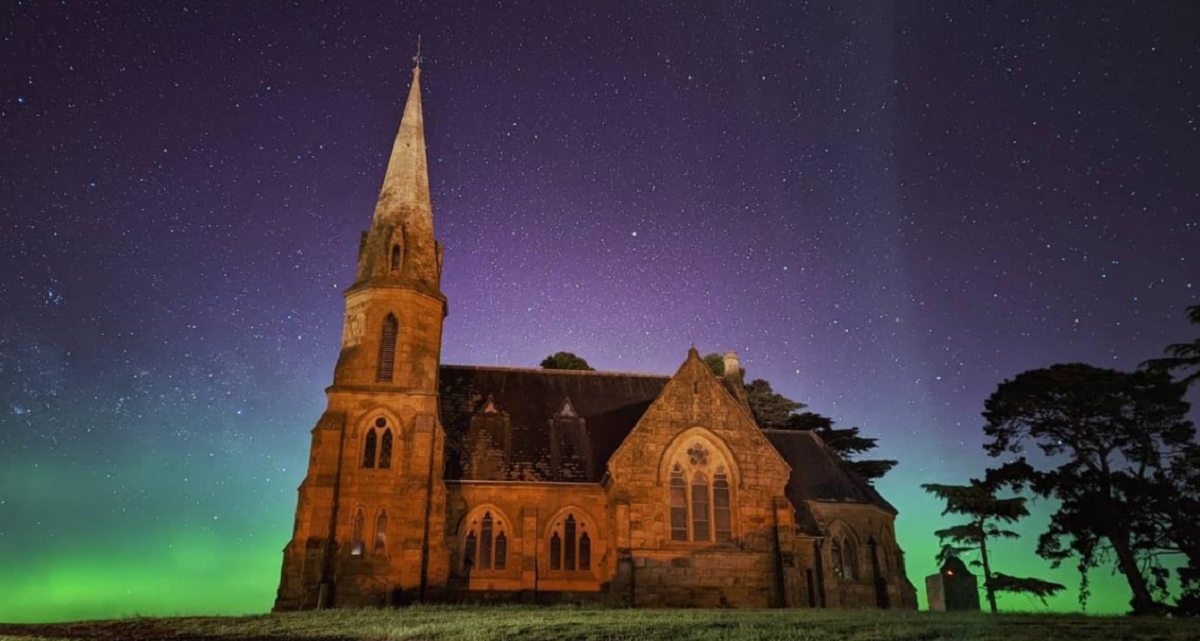
Ross Uniting Church is a popular tourist attraction in Tasmania, but the cost to insure it is prohibitive for the Presbytery. Photo by Susie Lambeth
The dilemma facing Rohan and Denise of how best to deal with the Ross Uniting Church is one regional presbytery administrators are all too familiar with.
In mid-December, the Ballarat Courier reported that the historic Neil Street Uniting Church would close this month, a victim of dwindling congregation numbers and the heavy financial cost involved in its upkeep.
“There’s grief and there’s sadness and all of those things as you would expect, but it’s just really beyond the congregation to meet the financial commitment and physical commitment the church requires,” presbytery minister Rev Trevor Bassett told the Ballarat Courier.
“The bottom line is that the cost of maintaining these buildings is just horrendous, and beyond the congregation’s capacity.”
Western Victoria Presbytery Chairperson Rev David Carter, who passes on the baton at this month’s Presbytery-in-council meeting, acknowledges that the heavy cost of maintaining church infrastructure is an issue that the Church there continues to grapple with.
“We’re in discussions about implementing a property strategy, including consultation with ministers and lay leaders,” David says.
“There are buildings that are rarely used these days as there are no congregations there.
“There are bluestone buildings that cost a lot to maintain, for heritage reasons and realities like the cost of insurance and essential safety measures.”
David acknowledges that any decision to sell such properties carries the risk of upsetting those who live nearby, even people who aren’t or weren’t members of the congregation while it existed.
He cites the sale of the Rokewood Uniting Church, and the publicity that created, as an example of what lies ahead for any presbytery considering selling its buildings.
“Rokewood’s church was a grand 19th century building, but it was home to only about half a dozen congregation members, who wanted to sell it,” David says.
“So this was an example of a church built during the Gold Rush days, with just a handful of elderly people worshipping who didn’t have the energy to maintain the property.
“But the sale was opposed by a few local residents, who were outraged that they might lose it.”
Gippsland Presbytery Chairperson Rev Ian Turnnidge says there is no doubt hard conversations are needed about the future of some congregations.
“Oh yes, definitely, and I think one of the challenges, and maybe this has been an indulgence in the past, is to think we can retain pocket congregations that haven’t really had congregations for a long time,” he says.
“Maybe we hold on to them thinking the next green shoot might emerge there and we can plant it in that space.
“I think it’s still possible in some instances. Johnsonville Uniting Church, near Lakes Entrance, has just had the most marvellous celebration marking 130 years of worship, and that is a congregation that has known challenges and has met them with some careful pastoral work at presbytery and congregation level.
“On the other hand, the Presbytery has recently received a letter from a congregation about its possible closure, which is exactly what needs to happen as that congregation hasn’t been formally meeting in any way, shape or form for a long period of time.
“Being brave in that space, I think, helps us to imagine what the next church is and helps us to be better stewards than if we had hesitated in the past.”
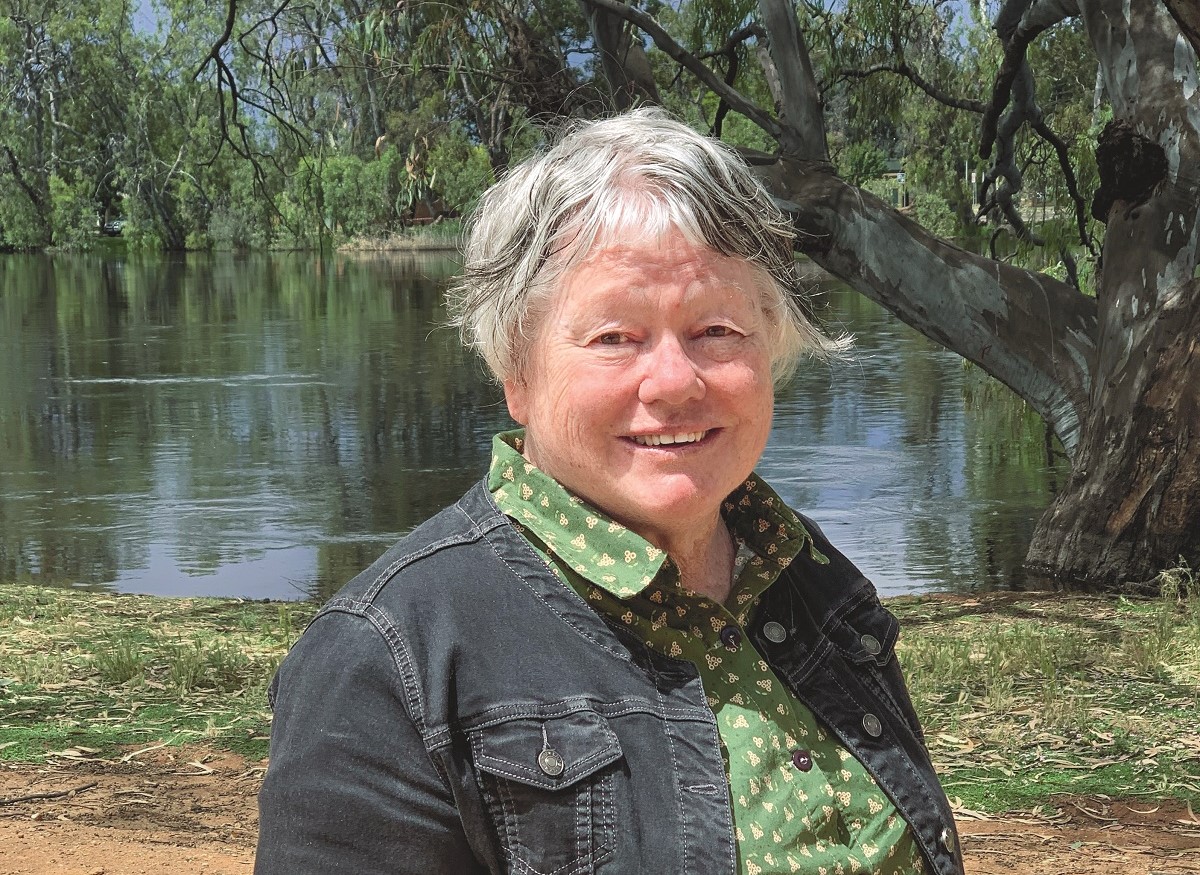
The size of the Loddon Mallee Presbytery presents its own challenges, says Chairperson Libby Gregory.
In Loddon Mallee, decisions around property are complicated by the sheer size of the presbytery.
“We’ve got a lot of space and not many people, and it can feel somewhat of an isolated presbytery,” says Chairperson Libby Gregory, who has been in the role a relatively short period of time.
“People are usually quite philosophical about the distances and time needed to do ordinary things like catching up with friends, or the fact that you might drive for an hour or so to do the shopping.
“We have over 50 congregations dotted around the region, but some of them might consist of a just handful of strongly committed people.
“They are nevertheless determined and faithful to maintain their identity as people of Christ in their area.
“Making decisions around the future of some congregations often presents great anxiety to people, because even if there is no one actually going to a service people still want a church, in that light on the hill type of scenario.
“So our presbytery ministers try to get around to people to begin these conversations about what the future might hold for their particular congregation; the chance to begin to explore and envision a different way of being church.”
David Carter says strong pastoral skills are required when having conversations with those who have a strong attachment to their church building.
“These are people with a lot of memories of events that have been part of the building,” he says.
“There is an awful lot of stuff wrapped up with buildings, and for some people it’s like their own home, and if you were told you were going to have to move out of your own home you wouldn’t be happy.
“So there is a diplomatic line to walk in terms of these conversations.
“It’s about taking that first step and then you might find some people are amenable to opening a discussion.”
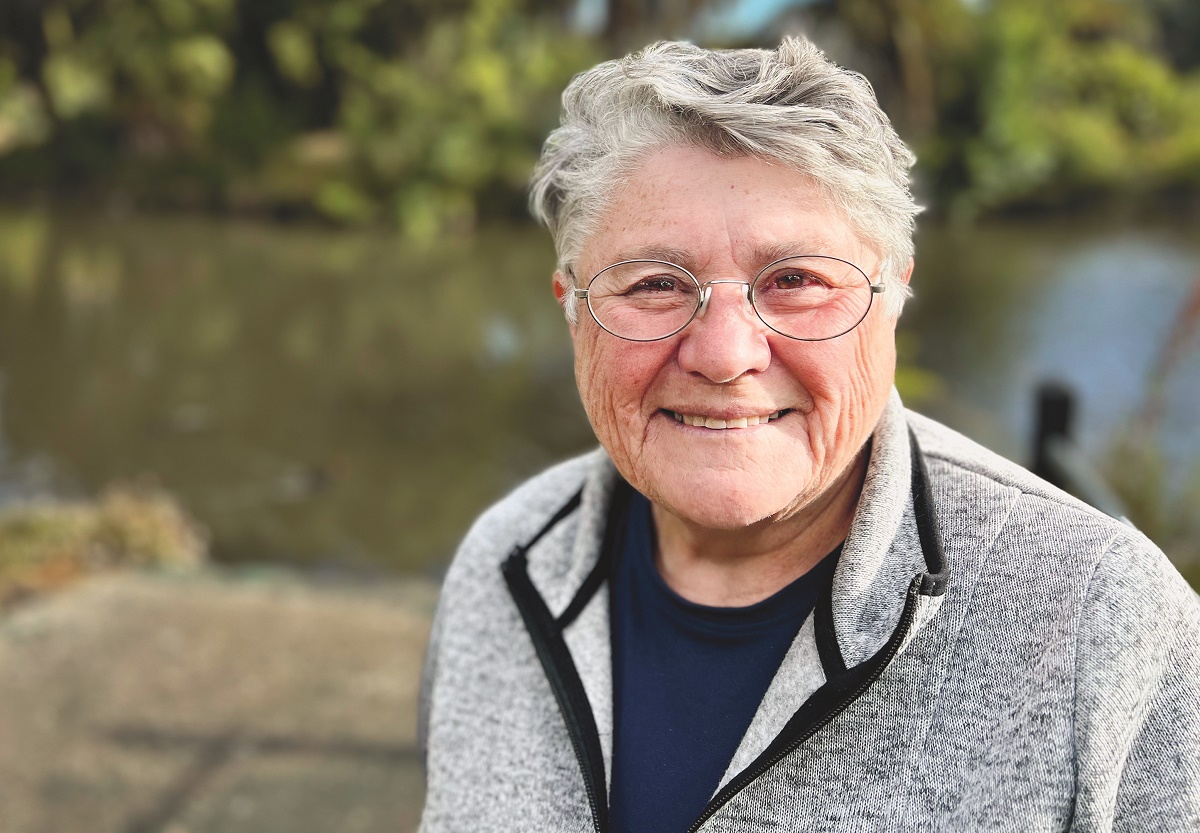
Chairperson Gereldine Leonard says difficult decisions are sometimes required when considering the future of church buildings.
Like David Carter, North Eastern Victoria Presbytery Chairperson Rev Gereldine Leonard is aware of the balancing act required between head and heart when it comes to the tough decision around a congregation and its building’s future.
“People are very keen to hold on to buildings,” Gereldine says.
“I’m a person who has been itinerant in my life, and so buildings don’t mean as much to me as they do to people whose heritage and whose generations of family have been engaged in the one place.
“But still, these are very difficult pastoral issues that we need to address.
“The reality is that some places have already closed and that has mostly been the farm corner type of church.
“I think one of the progressions that may happen is that people will see that it’s much easier for tiny groups to have their gatherings in a building that isn’t meant for a larger group, like an existing church, and demands a lot from people who are older and unable to do the maintenance themselves.
“We’re not pushing people to do things, it’s more about them coming to those conclusions themselves.
“So we are trying to work very hard with people to begin to talk about making these decisions, and to support them and to help them think it through and make it a good ending, if that’s what happens.”
Strong support and a real sense of empathy, says Denise Savage, are vitally important when it comes to having difficult conversations around the sale of church buildings.
“There’s often a family heritage and story attached to the physical property, and when a decision is made to sell it there’s a sense of not just their grief, but that they believe they failed or, you know, weren’t good enough to keep it going,” Denise says.
“It’s about that grief within a family story, and we’re talking about generations, so you can’t just come in lightly and go, ‘look, this is what you need to do’.
“It’s about recognising what the pushes and pulls are and questions like, ‘how do we work with that particular congregation? Is there capacity to try something different, or is there a different way we can think about this?’.”
As the regional presbyteries grapple with the concept of what the future holds for some of their physical places of worship, Ian Turnnidge believes an opportunity exists to reimagine what “church” might mean as we move forward from the dark days of Covid-19.
“It has to do with how many small communities have shifted and changed as people have become more mobile, and what the physical presence of a building may have meant even 20 years ago to what that physical presence means now,” Ian says.
“I’m also chaplain at Newhaven College in Rhyll, and one of the conversations that I came across in junior school a few weeks ago was a child who asked, ‘what’s a church?’
“Now we know the answer to that immediately, but these children are the second or third generation of people who have never been involved in the life of the church, and they’ve probably never gone to a wedding in a church or attended a funeral in a church.
“These are kids who have got a genuine open honesty to say, ‘what is a church?’
“So where that church building standing empty previously meant something to the people in that wider rural community, to the generations of children who have come afterwards who are connected to screens, it’s not even on their radar when they drive past.”
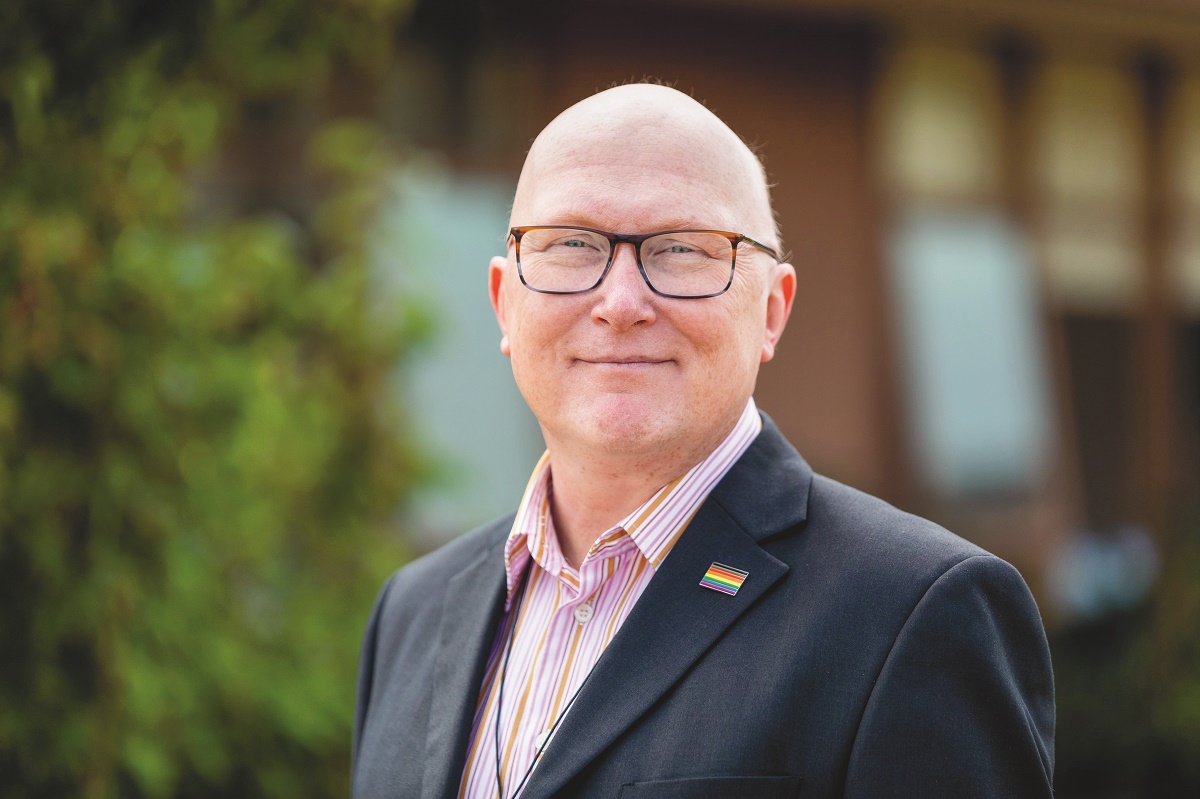
Ian Turnnidge urges presbyteries to grasp the opportunity to explore worship in an online setting.
The emergence of Covid-19, and its associated lockdowns making physical church services an impossibility, has opened up an opportunity, says Ian, to focus on what church could mean in an online sense.
It’s an opportunity, he says, presbyteries should be grasping with both hands.
“So it’s as much of us shifting to where the general public would look if they needed a church, and let’s not lose what we learned in Covid, that the online space actually is a future, a future of the Church, and it’ll be a manifestation of how those communities gather,” he says.
Gereldine Leonard, too, says the online possibilities which arose during Covid-19 have opened up a whole new world for congregations in a region like North Eastern Victoria.
“We have been able to build networks that now meet basically online and have established what people are calling the Small Church Network,” she says.
The Network is trying to engage people, not just in terms of the delivery of worship by Zoom, but to begin to engage people in areas of interest as well across those quite scattered combinations of congregations.
“The Northern Rivers cluster has been very successful in establishing a connection using Zoom during Covid-19 and has continued with that, and that was something that stood them in really good stead during the recent flooding in Rochester as part of that cluster.
“It has meant the minister and the lay leaders there have been able to maintain quite a good connection with people who are now scattered all over the place.”
In a regional presbytery the size of hers, Gereldine says online access has done much to negate the tyranny of distance.
“We try to meet in person with some regularity, but we can do a meeting on Zoom and it takes two hours,” she says.
“There is no travelling involved when previously it might have taken up at least two hours each way in travel, and some people would’ve stayed overnight, but now it’s done in a morning.”
For David Carter in Western Victoria’s large Presbytery, an ageing demographic means not only a drop in numbers at some services but also fewer people able to take on important roles within the Church.
“You know, there are a lot of big jobs that need doing and relatively few people to take them on,” he says.
“There really is a need for new blood, absolutely, but there’s a relatively small number of people who are all working really hard anyway, and are servicing a big area.
“The really big issue is that of an ageing and declining membership, there is no doubt about that.
“When the Uniting Church was formed in 1977 it was a broadly monocultural Christian society and in 40 years that has totally changed, and it’s really difficult for congregations to grapple with that.”

An ageing demographic means more support from younger generations is vital, says Gereldine Leonard.
Like David, Gereldine laments the fact that an ageing demographic isn’t being replaced by younger generations.
“I would imagine it’s a real issue in every presbytery, but it certainly is in ours and it’s that situation of not enough people entering the church below the generations that are there now,” she says.
“That’s an absolute reality and I think that what we are doing is trying to say we live in a world that has changed dramatically, and we in some sense haven’t made the change to engage with the world as it is now.
“Most people you will find in congregations are quite happy to be the church they have been forever, and to make that change is quite a big ask.
“But we are engaged in a process at the moment to say, well, the Church as we have known it will not be here in 10 years, but there will be a church that is different and how do we best serve and encourage that Church.
“So we are looking at exploring the idea that the Church that we will be moving towards is small, it will be lay led and its theology and mode of operation will be relational.”
In Tasmania, the sheer size of the island and its isolation presents its own issues for Rohan and Denise.
“The best description I can use is that Tassie is its own different space,” Rohan says.
“So we have inner-city, rural and very remote congregations to attend to, whereas other presbyteries tend to be one or the other.
“There are pockets on the west coast where the population is very sparse and they are supported by Frontier Services in terms of remote area ministry.
“So Tasmania is an interesting mix both geographically and socially.”
The island’s sense of isolation from the mainland can present its own challenges for anyone not from there, says Denise.
“Tasmania is its own world in many respects and within it there are pockets of very distinctive regional areas,” she says.
“There are people who have lived in Launceston all their lives and have never been to Hobart, and people in the northern suburbs of Hobart who have never been to the beach, so it’s that kind of a place.
“I think the other dynamic here is the strong suspicion of anything from the mainland.
“If you’re from the mainland you have to work hard and be cognisant of your place here, even before you open your mouth and begin a conversation.
“When we first moved here, I think probably one of the biggest things that actually mattered to people was that we bought a house straight away, and that suggested we intended to be part of everything, and that we actually wanted to embed ourselves here.”
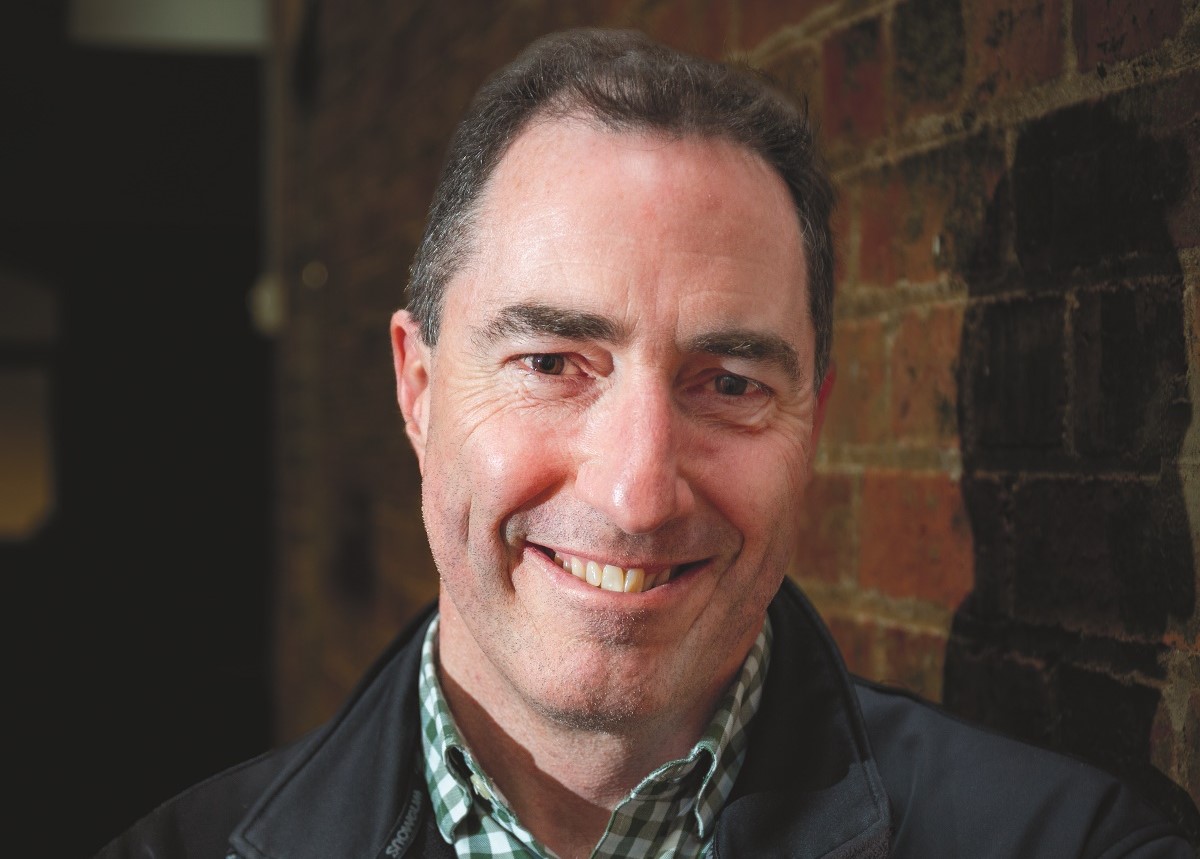
Presbytery Chairperson Rohan Pryor says Tasmania is an interesting mix at both a geographical and social level.
While there are many challenges facing our presbyteries, there is also much happening to feel more than positive about, as stories continue to emerge of congregations ready to embrace, rather than fear, the future.
In the Gippsland Presbytery, Ian Turnnidge is very excited about a number of initiatives, one of which involves First Nations people and is particularly important as the country considers giving its representatives a voice in parliament.
“Rev Deacon Wendy Elson is minister at Wonthaggi and her work has formed friendships and relationships with some of the First Nations people in that area, and that has opened up into a regular yarning circle,” Ian says.
“It has formed a community of indigenous families who have established a relationship with the congregation now, and they come into the normal service.
“This is a really interesting initiative that Wendy started just before Covid-19 hit, and those conversations and relationships have come into this year of normality and I think it’s an extraordinary development.
“All of this fits into that sense of walking together with our First Nations people, and I think all of us as ministry agents ponder the question, ‘okay, how do we do all of this’?
“Wendy has shown us a really great example of opening something up that the congregation could not have imagined beforehand.
“A yarning circle had never existed within the Wonthaggi congregation until these relationships were formed, and so we now see a textural shift in what a Sunday service looks like, as well as in some of the other activities that take place.”
Ian is also excited about the emergence of Messy Church within parts of the presbytery.
“A couple of our congregations have wandered into the Messy Church area and that’s interesting because it’s been a quiet discernment around this,” he says.
“Rev Ian Brown at Warragul has shared their engagement in this and Moira Dodsworth, who looks after Drouin and some of the smaller congregations, shared with us a huge response to a wine and cheese evening when people wanted to come together and think around funeral planning.”
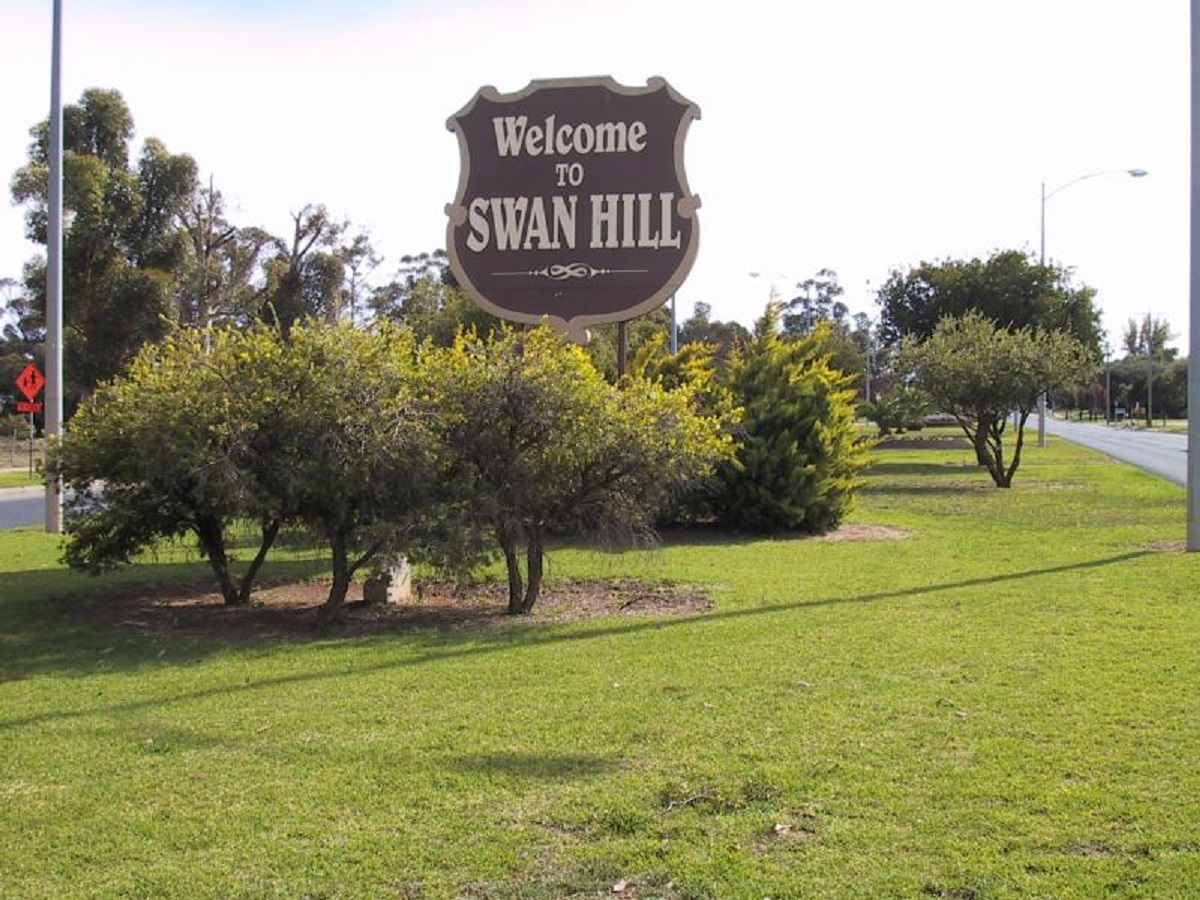
Swan Hill residents offer great support to refugees, says Libby Gregory.
For Libby Gregory, the sheer size and diversity of the people and places in the Loddon Mallee Presbytery brings both opportunities and challenges.
“In some areas there is a lot of space and not many people, and it seems like everyone is involved in everything, because that is the life and zest of the community,” she says.
“In the larger regional cities, there are interactions with lots of people in more confined, busy places, and perhaps a paradoxical feeling of being more dispersed.
“People in the towns and congregations are great at supporting and encouraging one another; it’s second nature to them and at times a matter of survival.
“We’re thankful for the energetic and creative ministers in placement, and pastors and chaplains who make up the presbytery and are immersed in the rural networks and activities.
“We have a chaplain at the large Bendigo hospital, which is a great gift and comfort to people from across the whole presbytery who are admitted there for treatment.
“Different congregations offer hospitality and friendship through op-shops, food centres, and other activities, while there is a strong network of support for refugees with Swan Hill as a very busy hub, and advocacy and help when needed for Pacific Island farm workers, especially around Mildura and Robinvale.
Denise Savage says it’s always worth celebrating some of the Tasmanian Presbytery’s success stories, like the Glenorchy and Claremont congregations, which form the Derwent cluster.
“You know, I think the importance of building relationships and being connected and valued in the story here really matters,” she says.
“It gives greater capacity to work through some of the hardest stuff, but it has also enabled some really good stuff to come through as well, like at Glenorchy and Claremont and where they’re sitting.
“Part of working with them meant that they are now in a position where they’ve got a minister in placement and they have connections with an interdenominational ecumenical space, and they’re doing a community food bank.
“That has come out of their hard work and feeling valued and supported and recognising, ‘here’s our missional values’, and here’s a proposition that then came to them in terms of a way that they had some space that could be used, and someone was looking for some space because of the missional values that they held out of the work that they’ve done, supported by the Presbytery.
“That’s become a space where more connections are now coming, Messy Church is happening in that space, and they have connected with a local school across the road, so there’s a growing edge of potential that they wouldn’t have had five or six years ago.
“They were supported at a time when they needed it, and they were heard, valued and respected.”
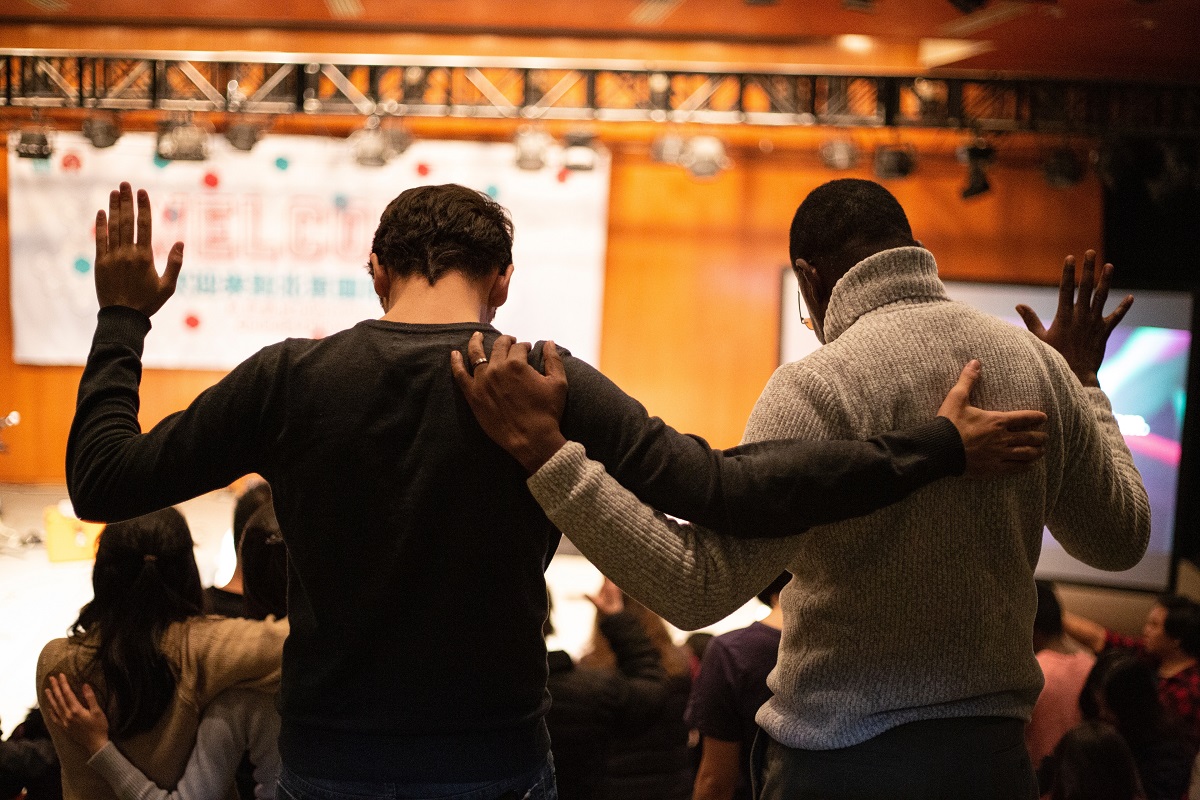
David Carter welcomes the emergence of new expressions of Christian community.
In Western Victoria, David Carter says while more hands would be welcome, those at the forefront of the Church hold it in safe hands.
“It’s about the capacity to adapt, and where a particular way of being church may die, new expressions of Christian community can emerge to replace it,” he says.
“Some places grapple with that possibility and for other places it’s just too hard.
“I look at this Presbytery and see great ordained ministers and pastors who are very engaged, and many very good lay leaders.
“I feel positive about the collegial relationships – ordained and lay across the Presbytery, but we can’t go on in a church-as-normal sense.”
For Ian Turnnidge, the answer to how the future might best work lies in innovation.
“I think so, although the danger is that we think ‘oh, we have to be innovative now and come up with another new idea, or do something that is different’,” he says.
“I think all of those questions are valid but it doesn’t have to be that we need to reinvent the wheel.
“I think the joy of the last 12 months of being braver about living with Covid-19 has enabled us to focus on the simple pleasures that are probably right at our fingertips and are manageable because we aren’t talking about large numbers of people coming together.
“We’re talking about that home church model where you can actually do beautiful things that are pastoral and lovely and delightful and reinvigorate us and reconnect us to one another.”
Libby Gregory says strong leadership has Loddon Mallee well placed for the future.
“We have three presbytery ministry roles that are so well staffed and those in them are really competent, pastoral and thoughtful people, so we’re very lucky to have them,” she says.
“I think we have probably started to free ourselves from property being seen as a burden, and several congregations have found a way for release and blessing in relinquishing places no longer in use, or useful.
“It seems like a time of understanding how we can work best as people of God looking at different ways of worshipping and just being together, and I feel like we are entering a settling period after some change.
“You know, the recent flooding in this area is just another example that showed the true nature of the people of the region, and what caring for one another is about.
“It doesn’t get called church or anything like that, but to me it’s just amazing to see people so physically and emotionally active in helping each other, revealing and encountering Christ in their everyday activities and conversations.”
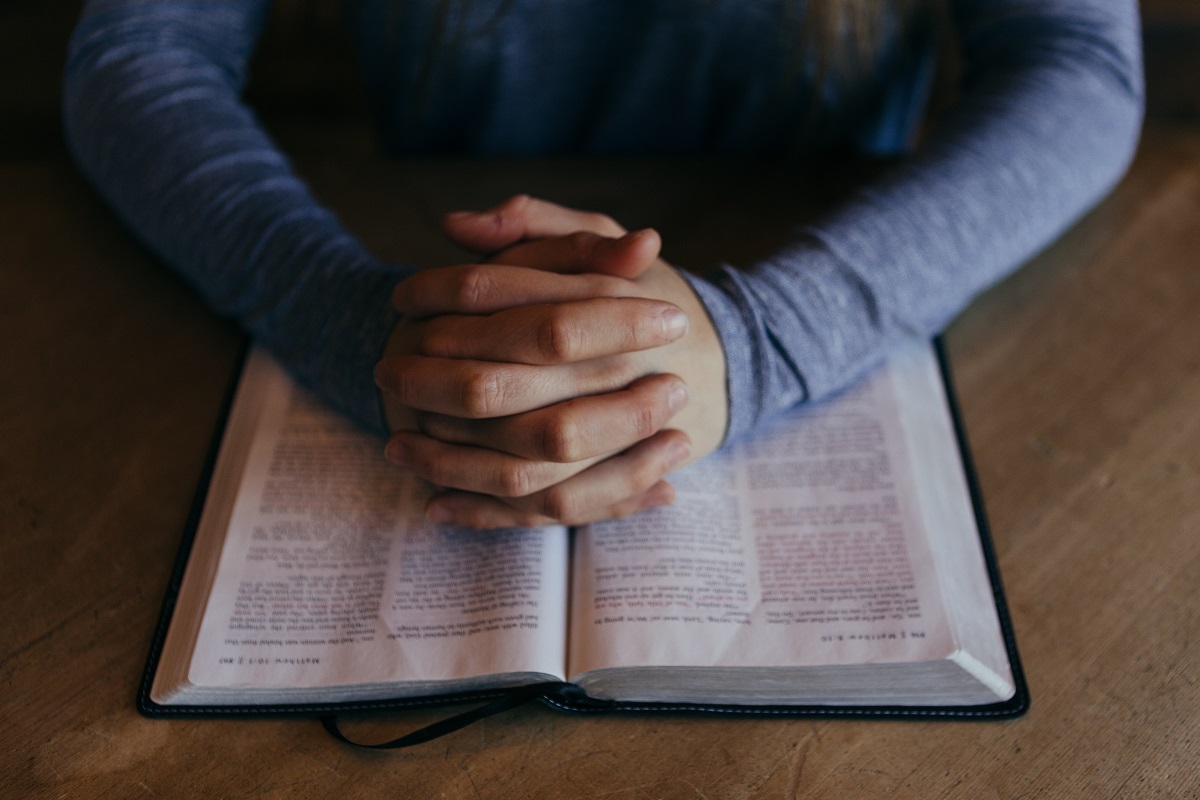
“The future might be uncertain but there are good, bright sparks around the place,” says Rohan Pryor.
Denise Savage admits she isn’t sure exactly what the future looks like for the Tasmanian Presbytery, as its members discern in which direction God is calling them.
“I think there will still be congregations of strength and vibrancy,” Denise says.
“Like even now across Hobart there’s conversations around recognising that there’s something different on the horizon and we can’t be as we are now, but what are we called to be and where is God pulling us?
“And I don’t think we’re quite yet sure what that is.
“I suspect it might be more a sense of recognising missional hubs rather than worship congregational life, and recognising key places where community might come together and that missional connection might happen, but it’s not about for the sake of its own life, but actually for the life of the communities in which people inhabit.
“Across greater Hobart there’s a recognition that we could be working collaboratively in some spaces.
“What might that look like and what might that mean for each of us to start paying attention to that?
“Is this something that God is calling us to, and what does it mean not for ourselves or the longevity of the Uniting Church even, but what does that mean for our community?
“Because that sense of community connection in Tassie, and that community relationship, is actually really strong and valid and important, and if you ignore that you ignore it at your peril.
“I think it’s in a very fluid and liminal space at the moment.”
Rohan draws a deep breath when he is asked about how he sees the future for Tasmania’s congregations and its Church.
“Put it this way, I don’t want to just be managing decline,” he says.
“I want to work with a team that wants to foster those conversations around future possibilities, as well as to care for the legacy that we inherited. That’s the team I joined, and the evolving team continues to grapple with that challenge.
“It’s about continuing to support local leaders as well as having some of those deep and meaningful conversations about what faith means for them and their communities, and what the Church means moving into the future.
“The future might be uncertain but there are good, bright sparks around the place.”
Gereldine Leonard envisages a future where there is a greater sense of co-operation between presbyteries, made easier by what technology can bring to the table.
“I don’t want to make too much of the rural-urban divide, but I think there is one and there is a different language that people speak in each, and there is a different culture and context,” she says.
“We are in the process of saying we should be engaging with other presbyteries to see, now that we have this great technological advantage, what we can share.
“It’s also about how we can reduce the effort that a lot of people put in, and to make their lives a bit easier, particularly in the areas of leadership.
“One of the things that we are also exploring is the potential for establishing people to lead small groups and to be at mission in their community and culture, people who are possibly part of existing congregations or even outside them. We are also asking how we could make those people self-sustaining.
“I belong to a small faith community in Nagambie and we don’t have a building, we meet in a different style and format at times, but we’ve thrived.
“We only meet two times a month for worship and we meet once in one of the other weeks with quite a significant social gathering, where we invite other people from outside of the congregation to come.
“It’s a very sustainable model for a small group of people.”
Whatever the future holds for the Synod’s regional presbyteries, though, one thing is certain.
In people like Rohan Pryor and Denise Savage in Tasmania, David Carter in Western Victoria, Ian Turnnidge in Gippsland, Libby Gregory in Loddon Mallee and Gereldine Leonard in North Eastern Victoria, the regions are in safe hands.
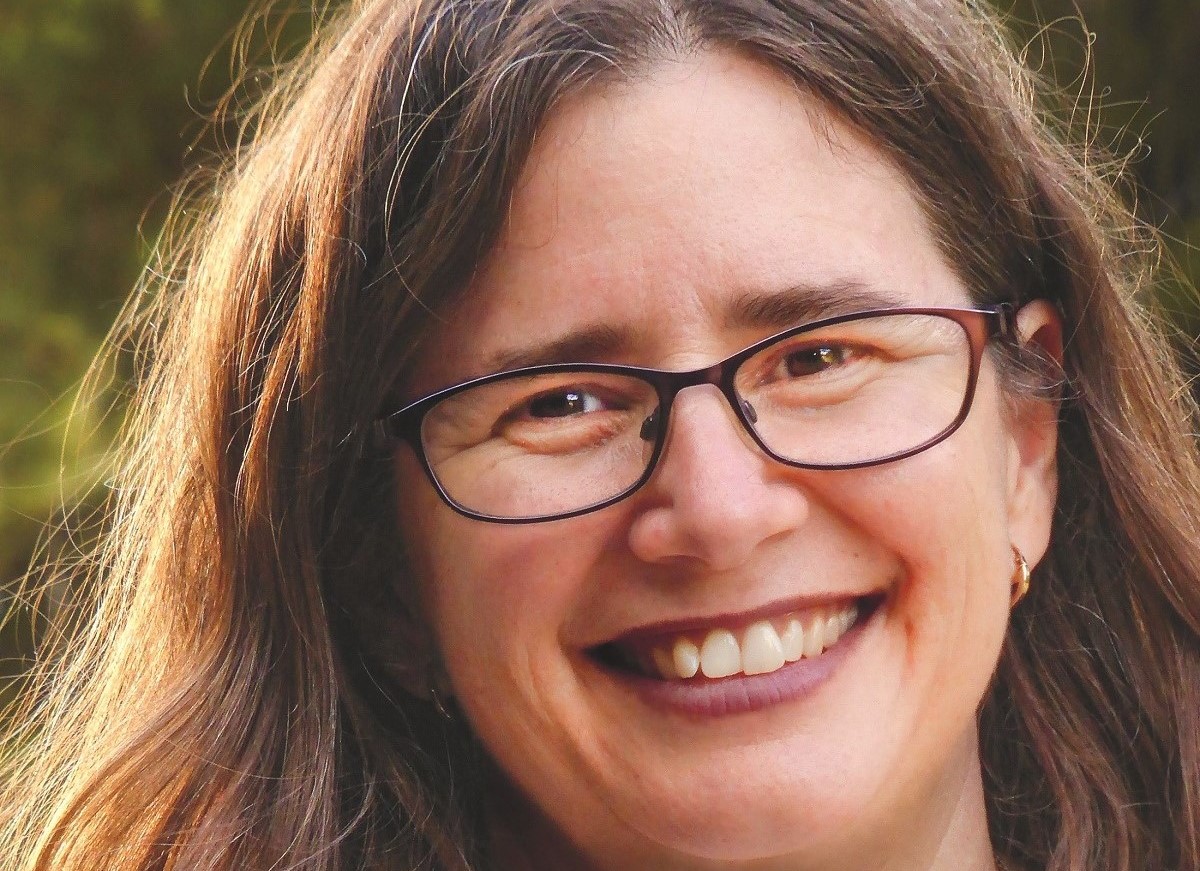
The challenge in a city like Hobart is to faithfully support people from all walks of life, says Denise Savage.
One size doesn’t fit all
With a population nearing 250,000, Hobart is the largest city in Victoria and Tasmania serviced by a Uniting Church regional presbytery.
And within Hobart are both ends of the socio-economic ladder, from suburbs containing people leading a reasonably affluent lifestyle to areas with residents best described as living on struggle street.
The challenge, says Presbytery Minister Denise Savage, is how to faithfully support those people from all walks of life.
“The way in which being church matters in a community is different from place to place,” she says.
Denise uses the contrast between Scots Memorial Church in inner Hobart and Bridgewater-Gagebrook in the outer suburbs as an example of how one size doesn’t fit all when it comes to providing support to congregations.
“You know, you’ve got Scots Memorial which is surrounded by emergency services, and the hospital is just a block away, meaning the congregation is surrounded by first responders and healthcare,” she says.
“So it raises questions around what does it mean to be in this place and space and how do we engage well, supporting people with mental health and intellectual disabilities and creating safe spaces for them to engage in worship and faithful living.
“But that looks very different to Bridgewater Gagebrook, where you are looking at residents with a life expectancy 20 years under the national average just because of where they live.
“So what does it mean for the Church to be in that place and space, where you don’t have residents high up on the socio-economic ladder?
“These people don’t have a history of higher education, and community services are what come in, hang around for a while, and then leave.
“Government services are the steady presence there but everyone else comes and goes.
“The Uniting Church’s presence there is probably an example of one of the longest standing, non-government, not-for-profit organisations that has had a long commitment to the life of that small community, and it means something to them that we haven’t come and gone, that we have a voice and place in that community.”
Travel about 200km from Hobart and you arrive in the small community of Fingal, an example of one of the smaller congregations the presbytery represents.
“We have a couple of small communities, like Fingal, where there are three or four people diligently doing their thing,” Denise says.
“That small number of people in Fingal really hold the community together because they are so embedded in its life.
“They know people and they respond to needs happening around them, and they know they have an expiration date as a congregation but until that time comes they will continue to plug away.
“So there is a real mixture across the state of what a vibrant community looks like.”

